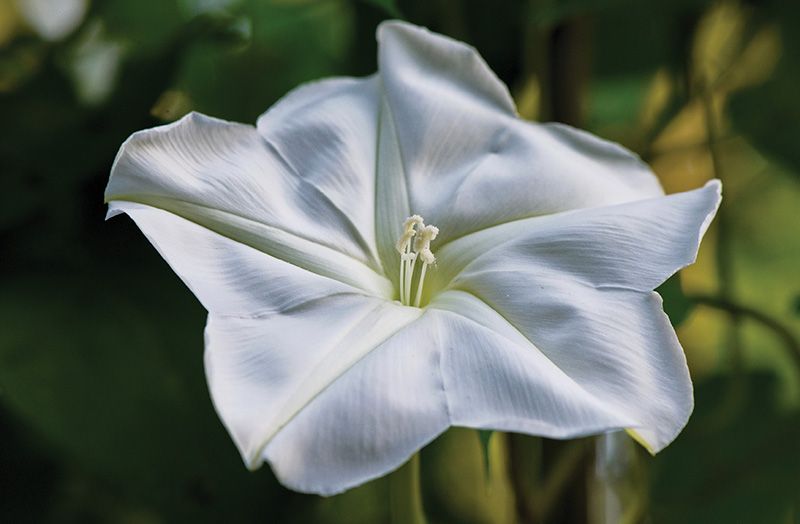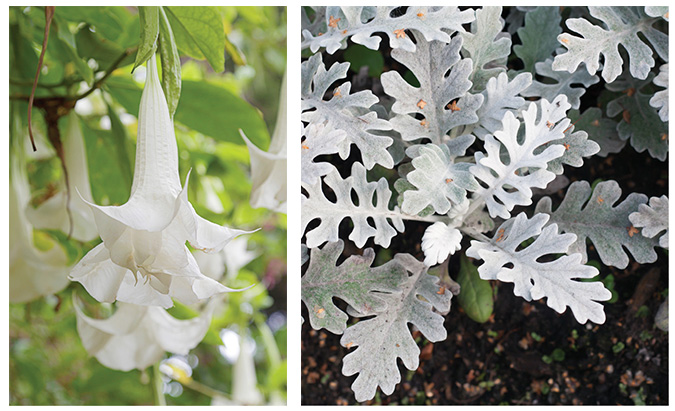White and silver foliage begins to shine as darkness falls

Moonflower vines quickly climb a fence or trellis.
Night brings fresh perspective to the garden: The moon illuminates unexpected spaces and throws intriguing shadows. Summer bugs turn up their volume. The heat abates, and outdoor lounging becomes a pleasure again.
This year, amplify the after-hours magic with a “moon garden,” a collection of white flowers and silvery foliage that pop in the twilight and glow once moonbeams hit.
First, pick a location—one visible from a favorite seat. For the best effect, it should be moonlit during your prime viewing hours. Spots in full sun invite more plant options, but shade holds potential, too.
Keep in mind that there are flowering vines you can train up fences and trellises, and that planting en masse will have the greatest impact, even in small plots. You might factor in a fountain or wind chimes for soothing sound.

(Left) Trumpet-shaped blooms drape from brugmansia, a tall, woody shrub; (right) Dusty miller thrives in well-draining soil.
Select white flowers that open or stay open after sunset. Annuals like fanciful gomphrena and climbing thunbergia come in snowy varieties that quickly fill into sunny areas. Yarrow is an excellent perennial addition, sending up showy bouquets that attract bees and butterflies for weeks on end.
For part shade, look to shasta daisies, which will return season after season, or mophead or lacecap hydrangeas.
Can’t put down roots? Display a queen of the night cactus (or “night-blooming cereus”) in a hanging basket. The cascading branches put on a show all year, but each bloom is a cocktails-in-the-garden-worthy event, lasting hours only.
Add foliage that shines. Two silvery annuals reflect the moon’s light: artemisia (a sun-lover) and dusty miller (which likes a break from afternoon rays). With a metallic sheen, perennial lamb’s ear creates a velvety ground cover. Brighten full shade with white caladiums; their oversize leaves stand out around the clock.
Infuse fragrance. As the sun goes down, certain white blooms release powerful scents to attract pollinators, like sphinx moths, that only dine at night. Among them is the annual moonflower vine, whose buds begin unfurling in early evening; perennial Easter lilies stay open all day but grow sweeter after sunset.
Yet for moon-garden drama, it’s hard to beat the “angel’s trumpets,” a pair of similar plants named for the shape of their flowers (though they are toxic if ingested). While datura is a perennial with upward-facing blooms, the woody shrub brugmansia can grow some 12 feet tall, draping its giant white pendants alluringly around a seating area.